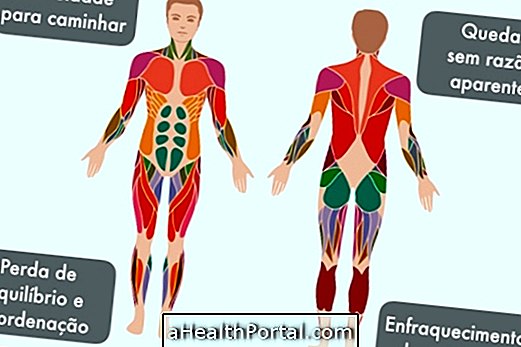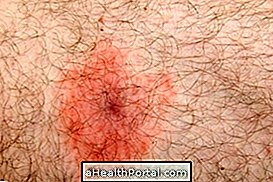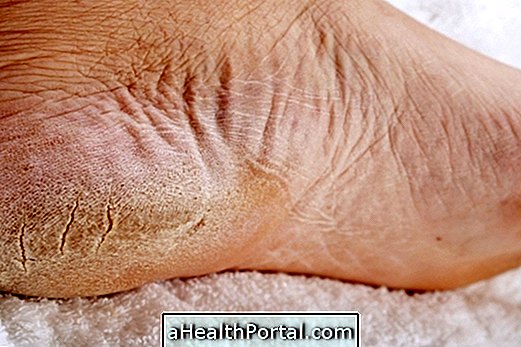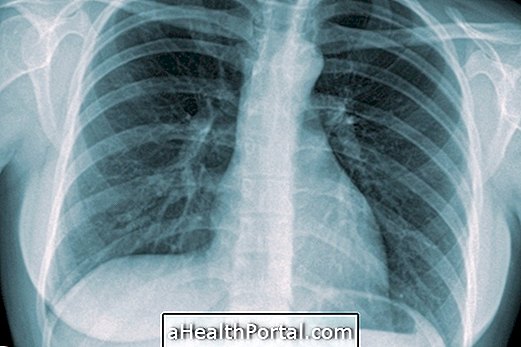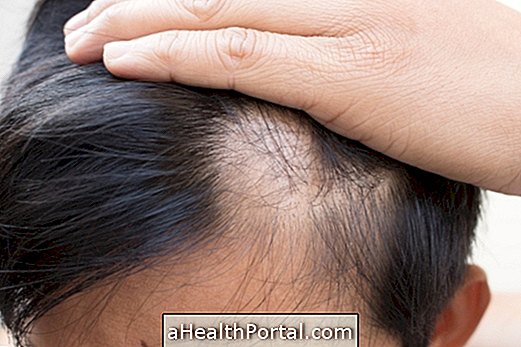Harlequin ichthyosis is a rare and serious genetic disease characterized by the thickening of the layer of keratin that forms the skin of the skin, which usually results in difficulty breathing, feeding and movement. Generally, babies born with harlequin ichthyosis die a few weeks after birth or survive at most until 3 years of age.
Babies with this disease have thick skin, which tend to pull and stretch the skin, causing deformations on the face and throughout the body. The skin develops an armor-like appearance and presents numerous cracks, which impairs the protective function of the skin, resulting in frequent infections.
The causes of harlequin ichthyosis are not yet fully understood, but inbred parents are more likely to have a baby like that. This disease has no cure, but there are treatment options that help relieve the symptoms and increase the life expectancy of the baby.
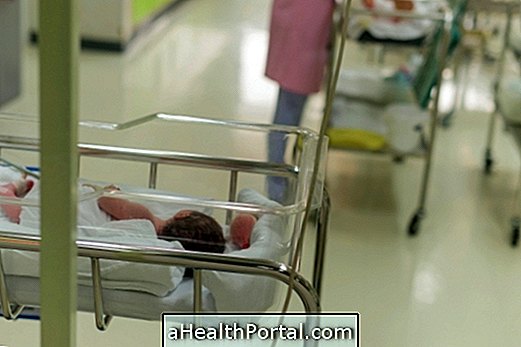
Characteristics of Ichthyosis Harlequin
The newborn with harlequin ichthyosis presents the skin covered by a very thick, smooth and opaque plaque that can compromise several functions. The main characteristics of this disease are:
- Dry and flaky skin;
- Difficulties to feed and breathe;
- Cracks and wounds on the skin, which favors the occurrence of various infections;
- Deformities of the face organs, such as eyes, nose, mouth and ears;
- Thyroid malfunction;
- Extreme dehydration and electrolyte disturbances;
- Skin peeling throughout the body.
In addition, the thick layer of skin can cover the ears, not being visible, in addition to being able to compromise the fingers and toes and the nasal pyramid. The thickened skin also hinders the baby's movements, getting into semi-flexion movement.
Because of the impairment of the protective function of the skin, it is recommended that this baby be referred to the Neonatal Intensive Care Unit (Neo Intensive Care Unit) to provide essential care to avoid complications. Understand how the neonatal ICU works.
How is the diagnosis made?
The diagnosis of Harlequin ichthyosis can be made in the prenatal period by means of examinations such as ultrasonography that shows open mouth, restriction of breathing movements, nasal alteration, fixed or clawed hands, or through analysis of the amniotic fluid or biopsy of the fetal skin that can be done at 21 or 23 weeks of gestation.
In addition, genetic counseling can be done to check the chance of the baby being born with this disease if the parents or relatives present the gene responsible for the disease. Genetic counseling is important for parents and the family to understand the illness and the care they should have.
Ichthyosis Harlequin has a cure?
Harlequin ichthyosis has no cure but the baby can receive treatment soon after birth in the neonatal ICU that is directed to decrease its discomfort.
The goal is to control the temperature and use skin hydration techniques. Doses of synthetic vitamin A are given and, in some cases, autograft surgeries may be performed. Despite the difficulty, after about 10 days some babies were able to be breastfed, however there are few babies that reach 1 year of age.
Treatment for Ichthyosis Harlequin
Treatment for Harlequin ichthyosis aims to reduce the discomfort of the newborn, relieve symptoms, prevent infections and increase the life expectancy of the baby. The treatment should be done in hospitalization, since the fissures and desquamation of the skin favors the infection by bacteria, what makes the disease even more serious and complicated.
The treatment includes doses of synthetic vitamin A 2 times a day to provide cell renewal, thereby reducing the wounds present on the skin and allowing greater mobility. The body temperature should be kept under control and the skin moisturized.
To hydrate the skin water and glycerin or emollients isolated or associated with formulations containing urea or ammonium lactate are used, which should be applied 3 times a day.


